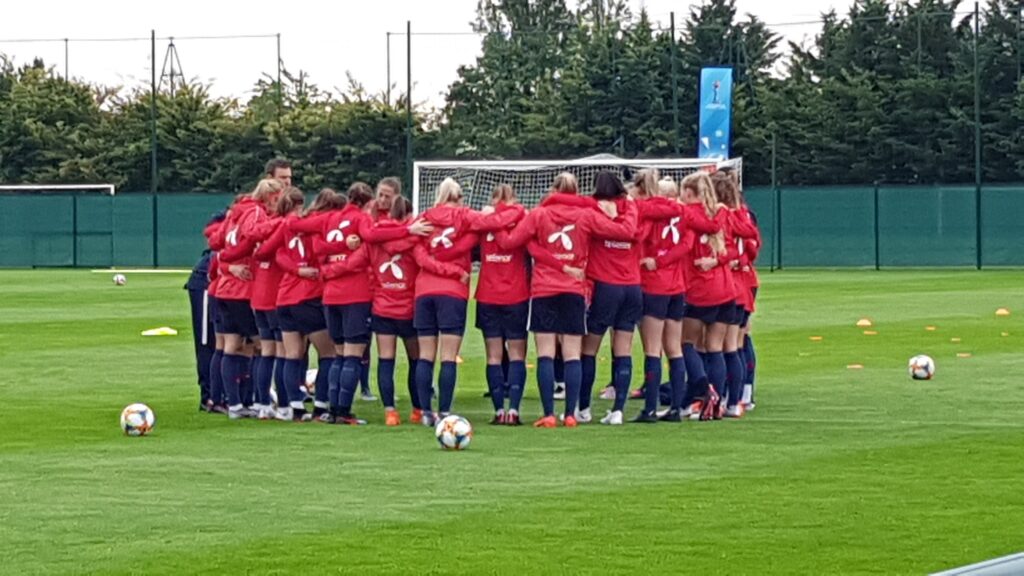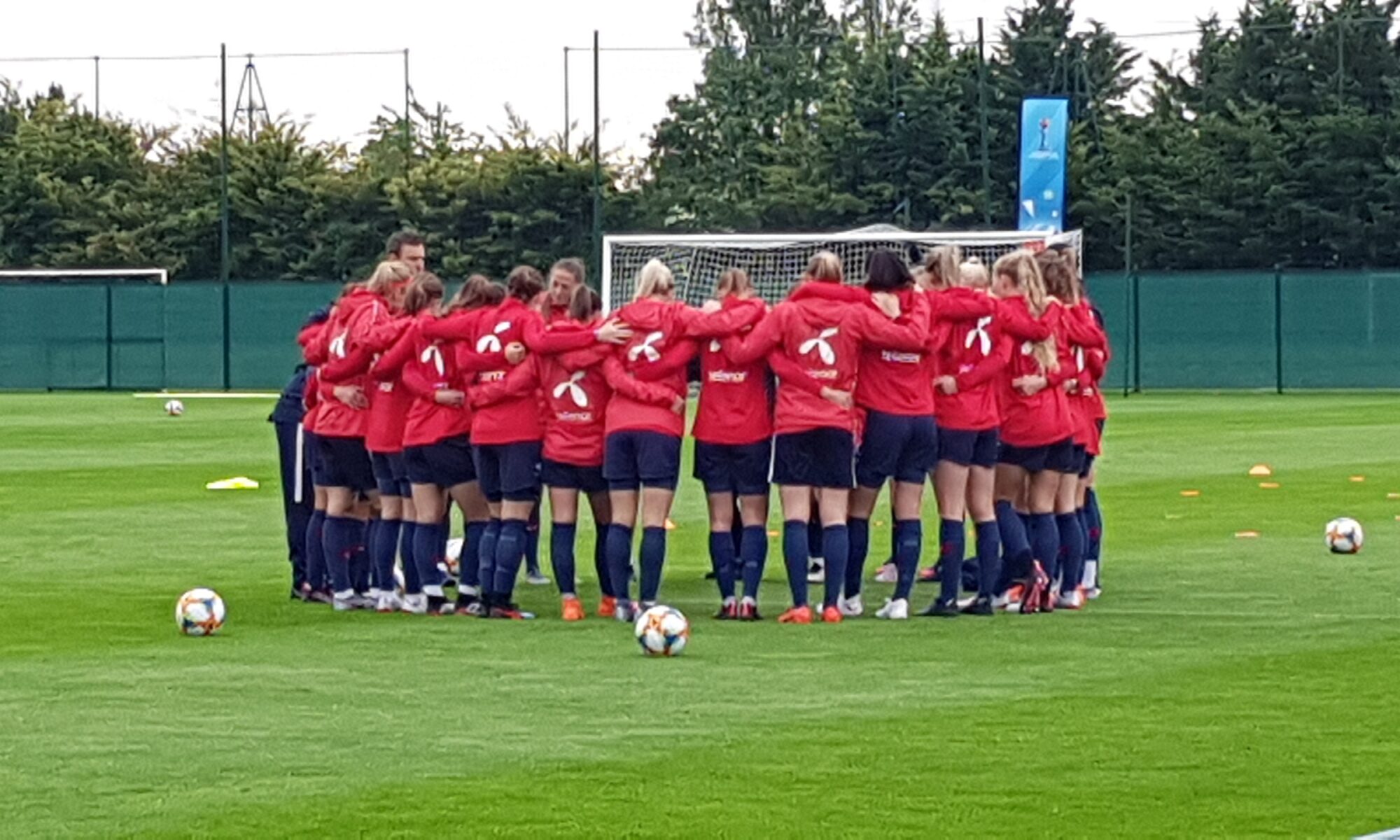LARS-GUNNAR BJÖRKLUND STIPENDIUM REPORT 2020
This report was financed by the Lars-Gunnar Björklund Stipendium and sponsored by Svenska Spel through the Swedish Union of Sports Journalists.
THE OPEN NATIONAL TEAM
June 24, 2017 – After three straight losses, a faltering attack and not a single goal scored, Norway are out of the European Championships in the Netherlands. The party continues, but without a country that has historically been among the absolute strongest in the sport.

Striker Caroline Graham Hansen sheds tears at the final whistle. She missed a penalty in the 0-1 loss against Denmark that put an end to the Norwegians’ participation in the tournament.
Her performance is slaughtered by public service broadcaster NRK.
“It is symptomatic of her and Norway. It’s a terrible penalty. It is at the perfect height for the goalkeeper, and it is very easy for the goalkeeper to save when she throws herself to her right,” says NRK’s football expert Siri Nordby in their live broadcast.
The team’s Swedish coach Martin Sjögren is also in the firing line in the immediate aftermath, and in the mixed zone the atmosphere is one of doom and gloom. No-one escapes media criticism.
“I will continue to work hard to make this better. I don’t care much about what others think,” says Sjögren when the subject of his future comes up, just six months after he took the job.
Hansen is upset when she hears that Sjögren is under fire and she takes the opportunity to defend her coach and her teammates.
“I think it would be stupid to throw six months out the window because of two and a half bad matches in a championship where all eyes are upon us. If you had followed us all the way, you might have had a different opinion,” she says bitterly.
Defender Maren Mjelde was also disappointed.
“It will probably be a bit depressing for a while, because we have just been knocked out of what we were supposed to be part of the rest of the summer. We can not dig ourselves all the way down in a hole, we have to try to build ourselves up, because there will be a new qualifying campaign shortly,” said team captain.
The appeal for understanding, however, fell on deaf ears. The headlines in Norway the next day saw Sjögren’s team torn apart.
“The All-time Norwegian European Championship failure,” said Aftenposten.
“European Championship fiasco completed,” said Dagbladet.
The criticism also comes from within.
“Zero goals in three games. There are a number of people that need to think about themselves,” attacking star Ada Hegerberg told Norway’s TV 2.
One of those who thought about her role in the whole thing was Hegerberg herself. Named Europe’s best player by UEFA 2016, in 2018 she would become the winner of the first Golden Ball for women, but in September 2017, just a few months after the European Championship fiasco, Hegerberg announced that she no longer wanted to be part of the national team.
If ever there was a football team in crisis that had every reason to shut out the media, it was Norway’s women’s national team.
Instead, they did the exact opposite.
THE COACH
March 2020 – Martin Sjögren is sitting in a posh hotel on the Algarve coast in Portugal, relaxed and a little tanned. Outside the window by the pool, the Norwegian players who are participating in the Algarve Cup are strolling around and enjoying the spring sun. The corona virus pandemic has not yet struck Europe with full force, and it is quiet in the luxury hotel with few guests besides the Norwegians. The tourist season has not started yet and the girls are laughing and having fun.
For some like Hansen (Barcelona) and Mjelde (Chelsea), the tournament is a break from the ongoing season that will soon come to an abrupt because of the pandemic. For others, such as Linköping’s Frida Manum and Kristianstad’s new acquisition Therese Sessy Åsland, it is to be regarded as part of the pre-season before Sweden’s Damallsvenskan.
Martin Sjögren sits on the sofa and takes the chance to look back on more than three years as national team coach for Norway, and why he and the team never closed the door to journalists. They rose from the ashes of the 2017 fiasco and made it to a World Cup quarter-final in 2019 where they lost to England, despite Hegerberg sticking to her decision not to join the national team.
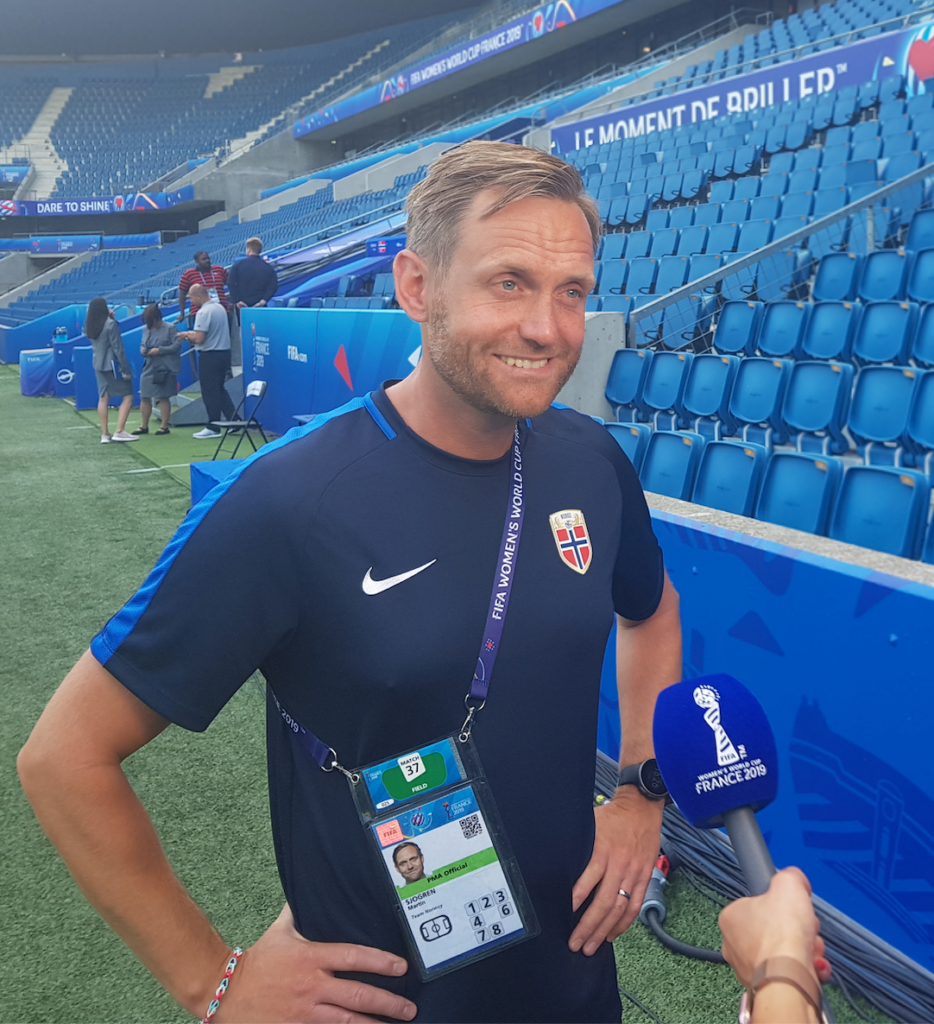
The World Cup in France was a success for women’s football in general, but journalists experienced that the closed culture that has long been part of the men’s game is beginning to be embraced by more and more countries – not least the host nation.
So why did Norway choose not to shut out the media completely when they tried to recover from the Euro disappointment and Hegerberg’s bombshell decision?
“It’s about several things. One is that we had a European Championship 2017 that was not good. We actually had a fairly large decline overall in Norwegian women’s football, there was quite a lot written about the crisis in the Norwegian football world. There was a lot that was not good for us in this.That’s not a true picture, we did have a poor championship, but that does not mean that everything is crap, “says the coach.
Sjögren has a fairly definite opinion about who calls the shots when it comes to how the national team is viewed by the people in the country.
“The media always gets opinion on their side, and they were of the opinion that we were not as good as we might have thought we were. So we needed to change that image of us as well, in light of all the uproar that came after the World Cup, like when Ada (Hegerberg) chose not to be part of the set-up anymore, and all the chaos that followed. We had a need to somehow showcase ourselves, and we needed to turn it into something more positive.”
And they did. In the run-up to the World Cup they patiently answered questions about everything from tactical systems and their self-confidence to Hegerberg’s absence. Not even a big interview with Hegerberg that came out the day before their first World Cup game against Nigeria, in which she criticized the national team management, could disturb them. In the end, Norwegian journalists got answers to all their questions and they went on to other things, such as team selection and which of the talented new players Sjögren had unearthed would get a chance to shine.
In France 2019, Sjögren was one of the most available coaches. Many non-Norwegian journalists were surprised when he stopped at the fence after each training session to talk to Norwegian journalists about players and tactics, injuries and opponents before moving on to foreign media. Journalists who are used to asking two or three rushed questions in a scrum with others often had ten minutes or more to talk undisturbed with the Swede.
For the journalists, of course, it was manna from heaven. For the coach, it’s about showing who he and the team are.
“We have worked extremely hard with our values, in how we want to be perceived and how we should behave in order to be perceived in the way we want. We have some values that mean that we behave in a correct way – regardless of whether it is a teammate or a team leader or an opponent, we behave in a correct way. After that it’s quite easy for us to do it within this framework and based on our values, or verdier as we say in Norwegian,” says Sjögren.
“We do not see the media as something negative, it’s not like it hurts us if we have a good relationship with the media – rather the opposite, it is positive.”
But of course, there are limits. The longer the tournament lasted, the greater the interest in the Norwegian national team. The journalists who joined the camp to cover the matches always got a pleasant surprise when the players and coaches stayed and took the time to talk to journalists individually. The Norwegians tried to satisfy everyone, but it did not always work.
“There was a lot of pressure on some players who have a high profile, and partly on my role, but for me it is no major problem. My job is to be available to the media. We had to limit access a little bit, but as a starting point to everything in terms of media, we said that we should be available. “
Even though Scandinavians are better at English than most, they do not always want to show it. Some of the players found it a bit embarrassing to stand in front of a camera and speak English, but for others it was no problem at all. For that reason it was often team captain Maren Mjelde, who plays for Chelsea, and Elise Thorsnes, who has played in Australia, who lined up in front of the English-speaking microphones a little more than others.
FIFAS VIEW
For FIFA, communication and media work has become a very big part of all championships. The governing body has long understood the importance of owning the story, of building storylines and profiles that fans can follow both in the stands and from the couch at home in front of the TV.
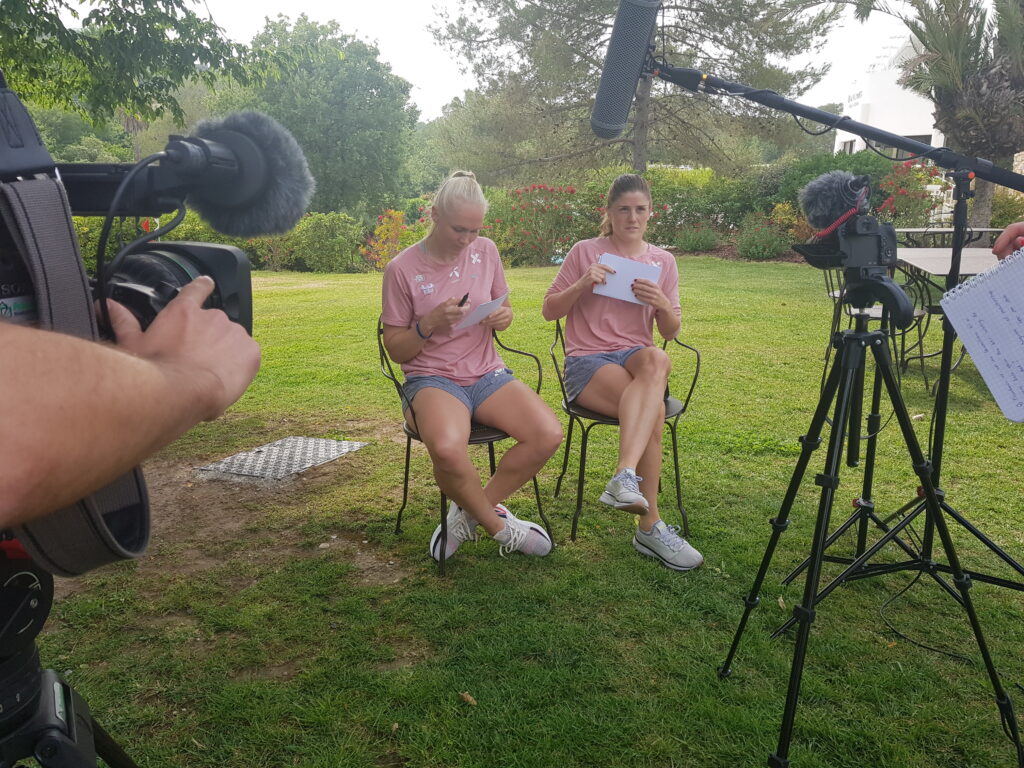
It is no secret that broadcasting and media rights are what generate the majority of the money for FIFA and UEFA, but the balancing act is a difficult one. If you show big matches too often, the quality drops and people lose interest. If you do not hear from the players or see them in news broadcasts or the sports pages, they will not care as much. Elite sports are as much about marketing as the sport itself.
But to do that, fans need to care, both about teams and personalities. It is not enough for the United States to play against England; we have to worry about Megan Rapinoe and Alex Morgan taking on Lucy Bronze and Steph Houghton.
The man who heads FIFA’s media department is the vastly-experienced Swede Hans Hultman, who has previously worked with the Swedish national team and who has long experience of working with both UEFA and FIFA.
For Hultman, it is important to keep everyone happy – TV companies, the various unions, fans, coaches, players and the rest of the media. It is not an easy task.
I start by asking him what FIFA demands of the various teams at a championship.
“We have a pretty clear rule for all our championships and that is that you can close one training per match completely. You often have three, four days in between (games) and on one of those days in the middle you can close the gates to have tactical training and no media at all, “he explains.

“Otherwise, the requirement is that it must be open for at least 15 minutes at each training session so that the media, especially the TV and the photographers, will have the opportunity to get some pictures from the training.”
Some things are set in stone when participating in a FIFA Championship.
”What is mandatory for all teams is the day before the match – that training must be open in order for journalists to have something to preview those matches with. That is the part that takes place on the pitch. Then, of course, we encourage all teams to be more open than just fifteen minutes. It’s not like we say it should be 15 minutes – during the whole training it can be open. “
The coaches must attend a press conference after each match and all players must go through the so-called mixed zone after a match, but they do not have to say anything or answer questions if they do not want to.
In the days between matches, it is a bit more relaxed when it comes to FIFA’s recommendations to the team – no one is forced to do anything, but it is clear that the governing body prefers that all teams contribute to football and the current championship by filling as much of the sports pages as possible.
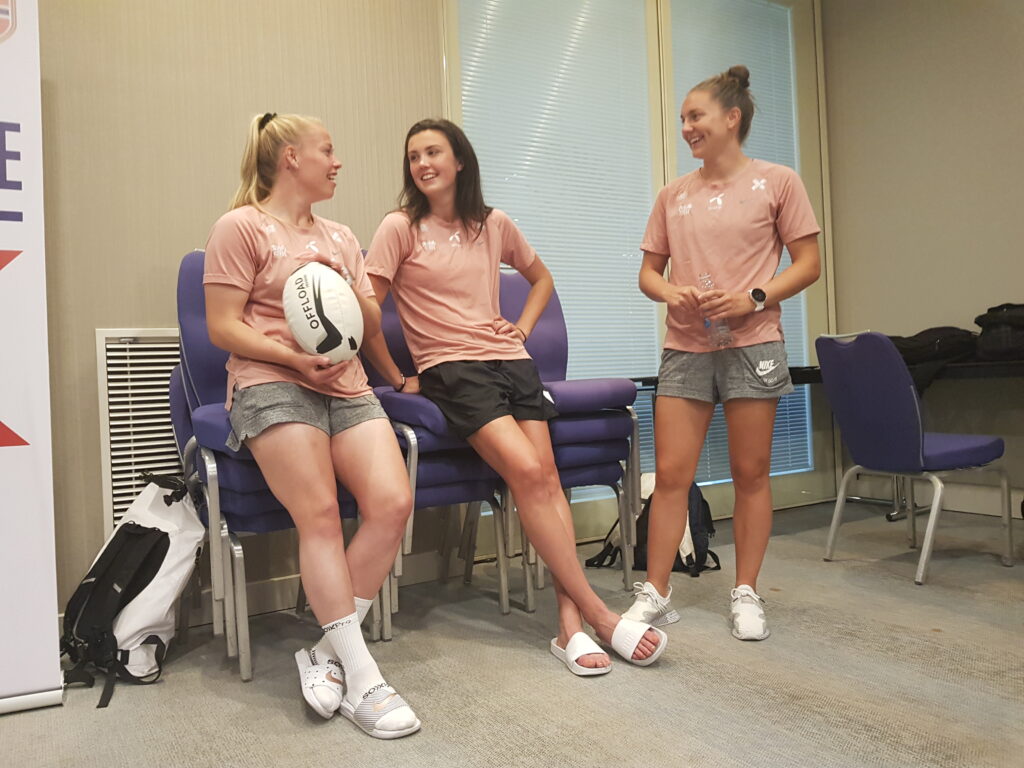
“We encourage the team to have at least one activity that the media can access or participate in every day. We don’t go into more detail, but we mention in that context that the coach, manager and preferably at least one player should be available to the media on a daily basis,” says Hultman, while admitting that it does not always turn out as intended.
“It is not always that it is complied with. It depends a bit on what level you are at. The big championships and the big teams have their routines that you work with, during qualifying games and in regular matches. We can’t really change that much.”
Hultman sees an opportunity to change behaviors by starting to work with players at an early age.
“If you educate the players a little, they are used to being available to the media, and then it will be easier when they grow up and come with senior national teams.”
For Hultman and his team at FIFA, it is a process of constant development. The requirements and production methods of the media are constantly changing.
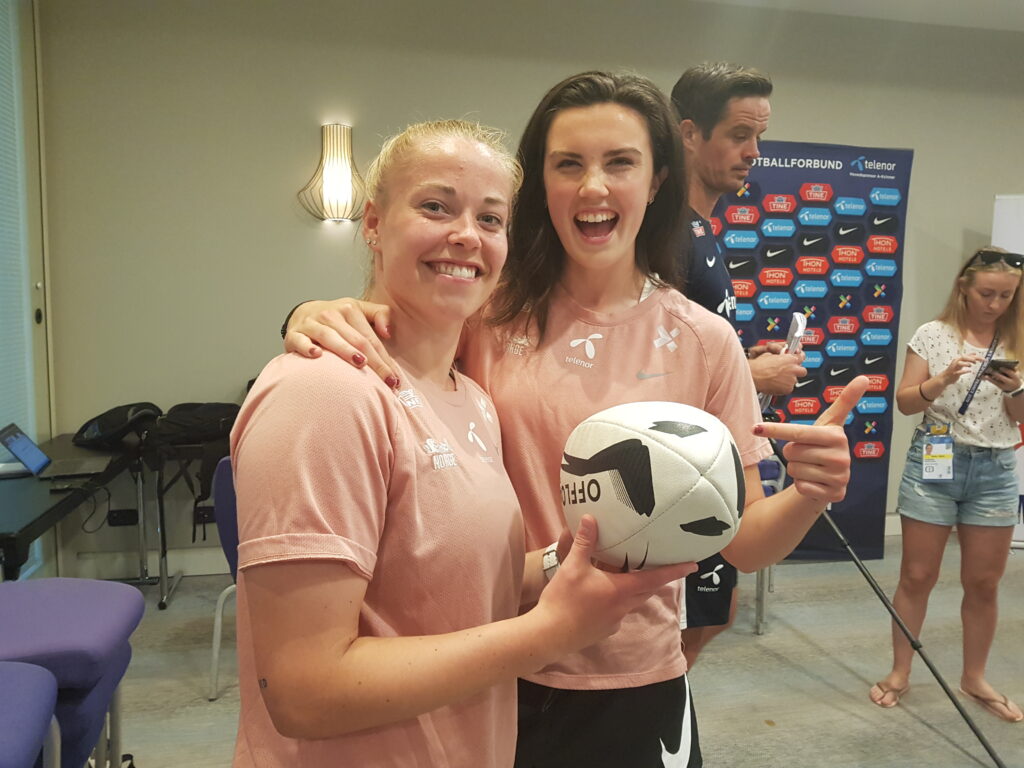
20 years ago, it was important for the daily newspapers to have all the material in good time for publication in tomorrow’s first issue – when that time had passed, there was not much more to do, no matter how juicy the quotes you had in your tape recorder were. Now that most outlets publish everything instantly on the internet in a variety of formats, it has changed again – it’s never too late to send a article.
Journalists are also not limited in terms of the number of words, the number of pictures or the number of minutes of video they can send. The internet and the audience devour everything, and journalists are expected to feed the beast all the time.
Immediately after a match, the people the audience wants to hear from most of all are not studio experts, but players and coaches – they want to hear directly from those who have been involved and won or lost about how they feel and why. Next in line are the writing press and radio – which is still a very important medium for many around the world – and they want to get something out with the players or leaders as soon as possible after the final whistle. This has forced FIFA to make significant changes in the way they do their media work.
“We work a lot together with colleagues in TV and with broadcasters in general. We have actually quite recently made a change in the plan after the matches, and that is that we have turned the system around – we have TV interviews directly after the match, and then directly into the mixed zone, “explains Hultman.
“In sports in general this is not a big change, because it is something that athletics has always had, and that the other major team sports such as handball, ice hockey, volleyball and basketball work according to. It is perhaps often easier for them as they are indoor sports – there are no restrictions when it comes to weather and wind and rain and cold and so on. But at the same time we are trying to adapt to the international sports world and the TV world and trying to deliver media material a little faster than we have done before, ”he adds.
It has taken time but it seems to be an improvement, Hultman thinks.
“There have been some bad examples, of teams that have stayed in the locker room for a long time after the matches before coming out and going through the mixed zone. They have had tactical reviews, they will eat in the locker room before the bus goes back to the hotel and so on. This means that we have not succeeded in delivering the service we want to the media, which is then waiting and stamping thier feet in the mixed zone and without any players arriving for an hour, or an hour and a half, or two hours. We are trying to change that, and it has been successful. “
A new system was introduced for the Women’s World Cup in France. First, there were interviews on the field, then immediately when the players entered the tunnel, there were TV cameras set up for so-called “flash interviews” after each match. These went out to all host broadcasters and are often held in the national team’s own language. After her superb performance against South Korea when she went off injured, Caroline Graham Hansen came limping into the tunnel on crutches. Once there, she bit her lip and conducted interviews in English and Norwegian, in so much pain that she could barely walk on her injured ankle. Her prize for player of the match had to be carried into the locker room by a teammate – after the usual sponsor interview and award ceremony, of course.
“I thought it worked very well at the Women’s World Cup in France, and it worked very well at the boys’ U-17 in Brazil as well. We had the club World Cup in Qatar and it was probably less popular there among the teams that are used to doing it differently, but somewhere you have to start that work,” says Hans Hultman.
“If you look at the women, it worked great in France and they even thought it was much better to have it that way. Everything gets done quicker and they can do what they need when it comes to recovery or food or treatment. ”
PLAYERS’ VIEW
Another member of the Norwegian national team who was very popular among both Norwegian and foreign media is Caroline Graham Hansen, the playmaker who signed for Barcelona before the World Cup started.
It is hard to believe that she is only 25 years old. She has been part of the national team since 2011 and only two years after her debut she played the European Championship final at Friends Arena in Stockholm where Norway suffered an agonizing 1-0 loss to Germany. The teenaged Graham Hansen won a penalty that was saved by the Germans’ superb goalkeeper, Nadine Angerer.
Technically gifted and possessing a burning intelligence, “Carro” is popular with journalists partly because she has a high profile, but also because she says exactly what she thinks and can always justify it. The tears after the European Championship loss in 2017 show a player who is also not afraid to show her feelings.
She comes to the hotel lobby with team captain Maren Mjelde to discuss how the media coverage affects them. The pair are among those who have the most experience in the national team, and thus among those who have some influence over the group.
We start by looking back at the crazy weeks from the summer of 2019 where Norway’s journey back to the top of women’s football took off again.
“We are not used to having as much media (as at the World Cup in France) so it is a great opportunity for us to show who we are, and maybe encourage the media to follow us more then. We depend on publicity to be seen, and we need to be seen to take the sport forward. It has to do with the fact that we have to be able to do media because we need it, (but) it became a lot more media than we thought before,” says Caroline Graham Hansen.
”We have been to championships before, but we noticed before the World Cup that ‘this is fun’ as well, we want to show how good we are and get the attention we have always wanted for a long time.
“But when it came to the end of the championship, it was not just doing media so that it would not be empty there, it was a lot – you started to get tired, you had a little energy, a little like that. At the end of the championship it was a bit ‘shit, now I would rather have been in my room and relaxed.’ “
As team captain, it was most often Maren Mjelde who had to go to the microphones.
“I thought it was very good of us to line up a lot, and I feel that this group puts themselves forward regardless, but of course everything becomes almost empty at the end of a championship. I feel that we did very well, even though we were tired towards the end,” says the captain.
FIFA’s new rules that players should go to the mixed zone immediately after the match were appreciated by journalists, who otherwise often have to wait for interviews and quotes. However, there were mixed feelings for the players.
“I just want to be with the team and enjoy the moment when you have just won. It is obviously easier to go through a mixed zone when you have won, especially when you have done it the way we did against Australia (on penalties) than when we lost to England, for example,” says Hansen.
Whether she wins or loses, Hansen is still prepared to face the press.
“If there is something I have learned, it is no matter how far it goes, it’s worth it for us to make ourselves available to the media. You need to be there – they were there for us all the way and when things do not go well one day and you don’t show up, it comes back on you. They can kind of write what they want a little bit, but if you stand there and talk, even though it’s tough, and actually take a little self-criticism … you have not achieved what you wanted to when you get knocked out or lose matches. Our experience as a group is that it benefits us in the long run,” she says.
The loss to England in the quarter-finals was not as fun at all.
“For me in such a situation, of course I just want to go home. But again – you have to stand up and try to be positive. We do our job on the field and journalists do their job after the match. We are dependent on each other, even if it does not always feel like fun. We have respect for journalists doing a huge job for us, and I think it is important to create good relationships with journalists. I believe that everyone benefits from more people showing up and showing respect for those who do the job, and showing what we do on the field, ”says Hansen.
For Mjelde, it could be a bit tougher. Foreign journalists who had been to training and talked to her waved their dictaphones at her in the mixed zone after the matches, but it was not always easy to figure out what to say in a foreign language.
“If you have won or lost, going in there and talking, it can be a little difficult to articulate, especially for the English media,” said the team captain.
Both felt that there was an occasional culture clash with foreign media that knew neither the players nor their habits.
“At the World Cup, there were some journalists who were very in-your-face and who were not Norwegian. You might know the journalists in Norway better, and they had a little more respect for when you said you did not have time, they let it go. But the foreign journalists, they just kept going and going and going, a bit like, just snapping and getting annoyed. I did not feel that they had the same respect for a ’no’ – that was my experience,” says Hansen, before Maren Mjelde interjects.

“But maybe it’s because we know the Norwegian journalists, they have been with us for a long time, while the foreign ones we met right before the World Cup or during the World Cup. We had never met before, so they ask questions that the Norwegian media asked two years ago. There is a difference, that’s it. ”
One that both coaches and players can trust is press officer Terje Skeie, himself a former journalist who has a smile and a good word for everyone – and who also got to play the role of of tall defender Wendie Renard when the team practiced dead-ball situations before the match against the host nation France.
“Terje is our expert, he has worked on both sides of the media. We lean a lot on him, when he comes up with tips it has only been good for us, so we are loyal to him. It has worked well,” says Hansen.
Terje has an excellent relationship with the media, he has known and worked with many in the Norwegian media for years, and is polite and helpful to newcomers from abroad.
“He is very good to us. If there’s a situation or things that do not feel so comfortable with, you ask for advice, but in the end it is you who needs to stand there and answer the questions,” says Mjelde.
“You have to be sure that you can get what you mean across. He comes with good advice, and of course we talk to each other. We have always wanted to appear as the good football team we are and that is what has always been our focus.
”There has been a lot that was outside of sports, other things we have been asked about, but there was one thing we wanted to do – to be seen as the good team, the ’stronger together’ team, which is our motto. We want to achieve this, not only on the field, but also off it. I feel that we managed to present ourselves as we want to appear. We can certainly do even more in the next championship that we qualify for, and there may be higher expectations of us based on the World Cup we had,” says Mjelde.
Have the Norwegians ever regretted that you have been so open?
“I think that at the end of the championship we needed a little more peace, but when you look back at things and the positive effect we have had after the championship, I want to say no,” says Hansen.
“This is what we have dreamed of happening, that people care about us, that people in Norway want to come and watch us live, that journalists want to be with us and want to write about us – preferably positively – and we have finally got that.”

“We were very convinced before the championship that we have to give of ourselves if we are simply to win people over. The more people write about us, the more we are seen. Then we get to do the rest of the work on the field, and we have done quite well. It may be different now before a European Championship when we have done so well, above expectations last time, but as it has been, I do not want to say that we regret it. It has been fun to do that,” she explains.
The question always arises as to how much a world-class player like Hansen or a team like Norway actually absorbs from what is said about them in the media. The discussion between the two star players comes to life.
Maren Mjelde: “These are things that we talk through with the coaches and Terje, about maybe, no matter how good things are going, not spending too much time reading things about ourselves, and especially if things are going badly. When things go wrong, this may not be what you need to focus on.
“But we really only experienced a lot of positives at the World Cup, and then you welcome hearing from family and friends that there is a lo tof good things about us in the media, and so it’s fun to keep up with that. You may have to agree with the family that not to mention all the negative things when they happen, because it can have a certain effect. You have to choose for yourself whether you want to read it or not. ”
Caroline Hansen: “We have experience. We got a whole championship (the European Championships in 2017) with just shit, there wasn’t much that was positive written about us. “
Maren: “It’s the result of what happened on the field.”
Caroline: “Yes, but it wasn’t the case that we suddenly became open during the World Cup – we were open from the European Championships.”
Maren: “I feel that we have always been quite open in Norway in the national team when it comes to the media. We used the two years since the European Championships 2017 to work hard to correct what had gone wrong there. ”
Does Hansen have a message for journalists who follow her in her national and club teams?
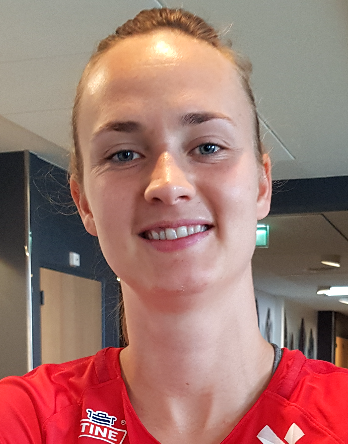
“In Norway, we were brought up to be approachable. We should be able to walk among (Norwegian) people, and the people should accept us, we are no different from any others. I feel that we have fairly down-to-earth, reliable journalists in Norway. You get a good relationship with many journalists, and that allows me to say things and trust that it will not be used. I understand that there are big differences from country to country, that the competition is different and how people work.
“But I think one of the reasons we are so open with journalists in Norway is that you can stand with a journalist after you have done an interview and talk about things that they may want answers to, but that they did not get answers to, and so they stick to what we actually talked about when the interview was going on, ”she explains.
“It shows that journalists accept when they get a ’no’, and you have a greater respect for each other, and that means that they get better interviews. You as an interview subject relax more and you have more confidence. You think ‘OK, I can actually talk quite freely without being presented in a way that I do not feel I want.’ It is not that journalists have to try to portray me exactly as I want, they still have to do their job in a way that they think is right. It’s like a win-win then.”
For Mjelde, it is about respect.
“Mutual respect is what I think is most important. I feel we get it. If you get asked the same question over and over again in a slightly different ways, I think we feel that there is no point in it, but maybe we know what to expect,” she says.
“You know that you have to ask certain questions – they ask, they do not get an answer, so we move on,” says Hansen and stretches. It’s getting time for the players to go and rest before their next match in the Algarve Cup.
“And that’s fine,” adds Mjelde. “You do your job and we do our job.”
THE PRESS OFFICER
In the end, there is one man who is responsible for media with the Norwegian women’s national team, and that is Terje Skeie. He has his bosses and must take into account the players and the coaches and the journalists, but he is the one who calls the shots.
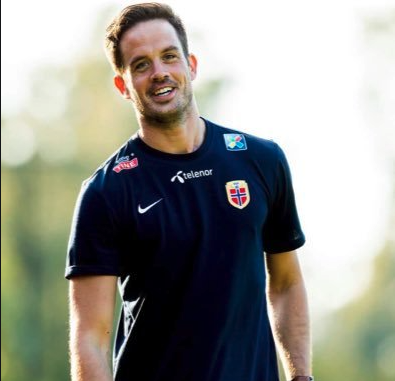
It is a role that is almost impossible – the media wants as much as possible, while the team wants to perform as well as possible, and FIFA wants the sport and the athletes to be seen as much as possible. That equation can be difficult to get together, but Skeie succeeds better than most with it.
“We have a starting point where we are accommodating and an open team, both for the media and for people in general. Then we have a principle where the sport should always be most important, that it should always be in focus, “he says.
New players who join the national team are immediately told what is expected of them in terms of media.
“If there is a lot of media in place, we bring up certain things that we think the players should be prepared for… but the simple rules are that they should be open and put themselves forward, to be accommodating, to promote our team and to really promote women’s football for everyone. “
It is a big responsibility for players who can be very young when they make their debut.
“I never pressure anyone to do media. There are many who are not used to making themselves available for the media, but instead of putting pressure on them, we try to help them and give tips and advice and explain the benefits of doing so. It’s one thing you get to learn about what it is like to be a national team player for Norway, meeting the media is part of it. We do not have a problem with players who do not want to face the media. It is rather the opposite – that during a championship the load becomes too great, and someone needs a break sometimes. “
Skeie thinks it gives something to also stand up when the negative winds are blowing, even if he has to convince them sometimes.
“It’s always fun to motivate them to meet the media, at the same time as I can feel that it is difficult for them to do so. But it plays a bit on the fact that we should stand there and we should answer for ourselves, regardless of whether it is a happy thing or if it is slightly more negative things. I have not witnessed anything that was so big and difficult as a media manager. It’s basically a bunch of happy girls who appreciate the coverage they get. ”
The situation with Ada Hegerberg was tailor-made for tabloid newspapers, and not just in Norway; not only was there a conflict with the management, but she also plays her club football in the French league for Olympique Lyonnais, the world’s best and most dominant football team at the moment. As the winner of the Golden Ball, Hegerberg has a profile that few can match, and of course there was a lot of talk from all sides about why she was not with the team in France.
“It was something I did not want to focus on there and then,” Skeie explains.
“It was something that had followed this group for two years, but the challenge was that we met more international media, not least the French media who were very interested, understandably enough. But we had an agreement from the start, and then it was important that the matter had to do with external factors and that we would keep it out of the discussion. We would focus on the World Cup and the first match we were going into, and that was the only thing we would put energy into. ”
The interview with Hegerberg in a Norwegian magazine in the days before the World Cup became one of the biggest news stories of the whole week. Men’s national team player Martin Ødegaard went in hard in defence of the women’s team on Instagram, and it became a kind of civil war in Norwegian football.
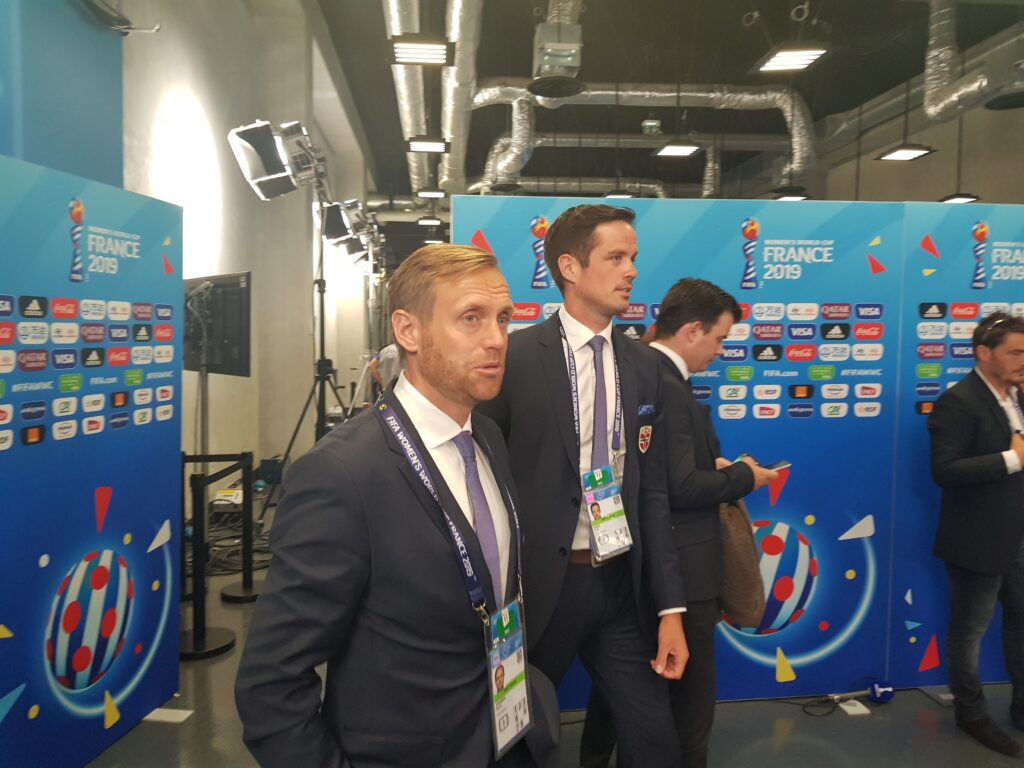
“There, I felt that the girls were extremely good at keeping focus, even though a few days before the first game it got stormy. Everyone was there with a goal, and that was the opening match against Nigeria. One thing I can say is that we were actually proud of the gang as they handled the days before (the opening game). “
It was a successful strategy. The team started with a convincing 3-0 win over Nigeria and all of a sudden there was very little talk about Hegerberg in Norway anymore, even though journalists from other countries would continue to ask questions about her throughout the tournament.
“It was really the motivation we had – we knew that if we won the first match, everything would be about the team, about us, the rest of the championship. We won that game and we experienced enormous support from the people at home. It gave the girls a big boost. We felt we left it behind after the win against Nigeria. “
Skeie is largely satisfied with how things work, at least as far as the Norwegian press is concerned.
“Overall, we have a very good collaboration. I’m not the one standing there with a timer, but if a player feels that certain interviews drag on, I take action. But if we see that there are good discussions and questions, and people are comfortable, I see no reason to stop. Of course we have time-frames because we have to move on.
”Sometimes I had to pat people on the shoulder and say it was time to end, and I think people respected that – and that was often because the players went on to new journalists.”
As a press officer, Skeie tries to keep track of how much time you have for a press activity every day and then divide the players accordingly. The most popular players like to talk to the media, but sometimes if the demand is high, it is taken in a cluster instead of individual interviews. As always, those who have paid expensive money for the TV rights get preferential treatment when it comes to access to the players.
Even though Norway lost to France in the second group game, the interest in the team was still enormous. After several weeks in training camp and two matches where everyone was available almost all the time, a decision was made before the match against South Korea to split the squad in terms of media availability. Half would be available one day, the other half the next day, and so on.
It was still more open than most and Skeie has a hard time seeing a situation where the team would become more restrictive, but it’s not just for the sake of the journalists.
“We look at our needs first and foremost. Of course, we take into account that the journalists should get the material they need, but it is first and foremost what we need to perform well that is important when we make decisions. There is a culture in Norway for it to be open and I think the girls are very grateful that people want to come and cover what they do. Most people have a very good relationship with the press. ”
The message that Skeie has to journalists is exactly the same as Sjögren, Mjelde and Hansen have – it’s about mutual respect.
“We have full respect for journalists and the work they do, and we are extremely happy for the attention they give us. At the same time, they must respect when we feel we need to take action and make changes. It’s about having respect for each other. “
With that, I turn off the tape recorder and go to the rental car again.
Tomorrow it is the mixed zone again where all players, from Ingrid Engen of Wolfsburg to reserve goalkeeper Oda Maria Bogstad in Sandviken, will line up.
Three years after the European Championship fiasco, the players stand in the sun in front of a small crowd of journalists. They get questions about the Algarve Cup, the growing pandemic and the future of Norwegian women’s football.
They respond as openly as ever.
THE PERSPECTIVE FROM THE PRESS BOX
The World Cup in Russia, 2018. Sweden’s reserve defender Filip Helander has ended up in hot water.
He has not been in a fight, or gotten drunk. Nor has he been late to a gathering or forgotten his football boots.
It’s much worse than that.
He’s done a podcast interview.
On June 14, an article is published in Sweden’s Sportbladet newspaper about how Helander has “broken the rules” by doing the interview with the podcast “Extra Time” from his hotel room in Gelendzik where the Swedish national team has based itself.
National team manager Lasse Richt is asked about the interview by Sportbladet’s journalist on location in Russia.
“‘I will take it with Filip,’ he says and gets serious,” it says in the article.
“We have said that we should not do anything outside… yes, maybe we can do it, but then our media managers Staffan (Stjernholm) or Ester (Kristiansson) should know about it, and then they have said yes and we can say that we did it ‘because’.”
Thus, Lasse Richt reveals what the journalists that cover the Sweden team have known for a long time – it is almost impossible to get an individual interview with a player outside the scheduled press activities. The Football Association simply does not want to.
The interviews that take place are done in a mixed zone in a so-called “scrum”, where everyone extends their microphones at the same time. It’s messy and not optimal at all, and it’s all over in a few minutes.
There is no room for deeper conversation or discussion. The time will be filled with bland non sequiturs about the team being most important and if everyone does as they should, it will go well. Conflict should be avoided, and a player should preferably not express an opinion about, for example, the prevailing political situation in a dictatorship if that is where the competition is taking place.
No journalist wants to write it, and readers do not get anything out of it either. It is journalism with a low nutritional content, almost completely free of calories. It tastes of nothing.
But it does not have to be that way.
As a journalist I have covered a wide range of sporting events and championships, from the Olympics to the soccer World Cup to obscure competitions in pike fishing. On my professional journey I have interviewed everyone from global stars such as Zlatan Ibrahimovic, Usain Bolt and Conor McGregor to local profiles in martial arts and swimrun.
The trend in the sports world is towards an increasingly closed environment. For the media in general, it is about attending press conferences or mixed zones. It is incredibly difficult to get exclusive interviews if you do not buy expensive broadcasting rights or go through sponsors, who pay big money to be seen.
Sports organizations see great value in the media – but they also want to control the media as much as possible. By controlling the flow of information and access, they can have a huge influence on what is written and said. The lack of access to the stars makes TV companies even more inclined to pay big money to broadcast championships and competitions, and the vicious circle continues.
If you ask an awkward question, you are out in the cold. Rarely is there a difference made between the person and the profession. More and more, executives and athletes ask for the questions in advance and demand that journalists not talk about certain topics – demands that no journalist can or should agree to. Sport must begin to understand that what they want is PR – but what we do is journalism, and the two things are not the same.
For this report, I went to the Algarve Cup in football and once there, I thought I would take the opportunity to do some other articles and assignments.
I booked an interview with a national team player from one of the eight teams that participated in a city a couple of miles away. About an hour before I went to meet her, I received a message that she had already “done media” for that day and that the interview would not take.
There was only a handful of journalists in situ in Portugal, at a competition and in a sport that receives very little coverage and where journalists are often criticized for not being there and not caring.
But the most important thing is seemingly to have control and not to do anything outside the framework of what is acceptable to the various governing bodies.
Finding myself free all of a sudden, I sent a text message to Terje Skeie, press officer for the Norwegian women’s national team, and asked if he wanted to meet. Just come to the hotel, he said. Once there, I met Therese Sessy Åsland and we talked about her move to Sweden and Kristianstad, like any two adults. Both of us made it through the encounter unscathed
The openness that the Norwegian women’s national team cherishes should be a topic of discussion for everyone in the sporting world – and what the players say about building trust should be taken into account by all journalists.
By letting us journalists get close to them, we can do a better journalistic job. We can tell their stories and pass them on through the media to the fans who are interested. We can help them reach people. We can have a better idea of what they do and why.
But we must also show an understanding of them and that we are worthy of their trust. To be an elite athlete is to be exposed and vulnerable. One clumsy statement can lead to screaming headlines and torn-up sponsorship contracts.
Our press ethics rules as journalists state that we must safeguard personal integrity, and that we must respond to reasonable requests from interviewees to know in advance how and where their statements are reproduced. No athlete can demand that we treat them differently or look between the fingers.
But they can rightly demand that we treat them fairly.
What does the future hold? I hope that those who control sports at all levels realize the importance of the media, not only as a PR channel, but as a way to give back to the societies that supports them, in every way.
I hope we can build trust, and trust in each other. I hope they see the safeguarding function that the media has as something positive, and not negative. I hope it will be even more open.
I also hope that fellow journalists think about the people we are dealing with, and do not see them simply as stars or brands. You can not have an equal relationship with someone you have put on a pedestal. I hope to see an end to detached quotes and blown-up “controversies” that are inflated out of nowhere to create conflict.
One thing I do know is that I will be watching the Norwegian women’s national team for the rest of my professional life, or at least as long as they feel they can trust me and want me there.
After all, who does not want to be involved in covering an open national team?
